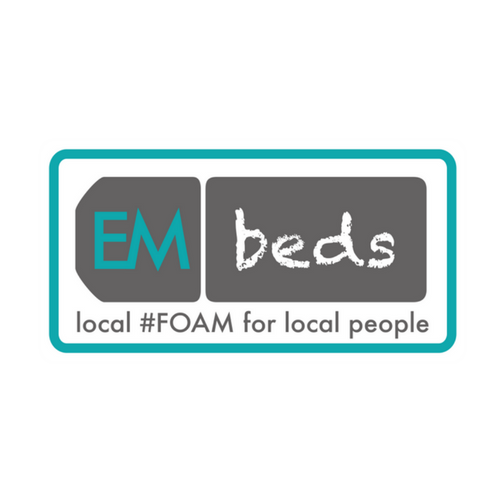Background
- Defined as any traumatic injury to the head other than superficial facial injuries.
- The commonest cause of death and disability in people age 1-40 in the UK.
- Account for 1.4 million ED attendances each year, 95% of these are minor head injuries that can be managed in the ED.
CRASH3 – Think Tranexamic Acid (TXA)
- Adult Head Injury patients within 3hrs of injury with ≥1 of
- GCS ≤12
- Intracranial bleed on imaging
- No other significant bleed (as they would likely get any way post Crash 2)
- Treatment – 1g TXA IV over 10min then a second 1g TXA IV over 8hrs
- If Commenced prior to CT and CT is then reported -ve 8hr infusion may be stopped
Assessment
History:
- Establish Mechanism of Injury
- Symptoms and onset in relation to injury
- Past Medical history (specifically disorders of clotting)
- Medication (any anticoagulants/antiplatelets)
Examination:
- Any focal neurology
- Any signs of basal skull # (battles sign, panda eyes, haemotypanum, oto/rhinorrhea
- Any depressed skull fracture (boggy haematoma, palpable dent)
- Any other injuries (specifically C spine injuries)
Investigations – Adults
Note: If anti-coagulated, haematology happy to reverse prior to scan if we are concerned
Immediate CT Head (within 1 hour) ANY of:
- GCS <12/15 on arrival in ED
- GCS<15 2 hours or more post injury
- Any signs of and open or depressed skull fracture
- Any signs of a base of skull fracture – Haemotympanium, Panda Eyes, CSF leak from nose or ears, Battle’s Sign
- Post-traumatic seizure
- Any new focal neurological deficit
- More than 1 episode of vomiting
Delayed CT (within 8 hours) if any LoC or amnesia plus one of:
- Age more than 65
- Bleeding or clotting disorder
- Dangerous mechanism of injury (Pedestrian or Cyclist hit by motor vehicle, Ejection from motor vehicle, fall greater than 1M or 5 steps)
- More than 30 minutes retrograde amnesia
NICE Guidance: CT Head/Neck in adults
Investigations – Children
Immediate CT Head (within 1 hour) if ANY of:
- Suspicion of Non-accidental Injury
- Post-traumatic seizure
- Initial GCS in ED < 14 or < 15 in under 1’s
- GCS less than 15 2 hours after injury
- Any suspicion of an open or depressed skull fracture or a tense fontanelle
- Any signs of a base of skull fracture – Haemotypanium, Panda Eyes, CSF leak from nose or ears, Battle’s sign
- Any new focal neurological deficit
- Bruising/swelling or laceration more than 5cm on the head of under 1’s
Immediate CT Head (within 1 hour) if 2 or more of:
- Loss of consciousness witnessed for greater than 5 minutes
- Abnormal drowsiness
- 3 or more discrete episodes of vomiting
- More then 5 minutes of amnesia
- Any dangerous mechanism of injury – pedestrian or cyclist hit by motor vehicle, ejection from a motor vehicle, fall more than 1m or 5 steps
- Any current Bleeding or clotting disorder
If only 1 of the above
- Observe for at least 4 hours post head injury
- Scan within 1 hour if:
- GCS <15
- Further vomiting
- Further episode of abnormal drowsiness
NICE Guidance: CT Head/Neck in Children
Investigations – People taking anticoagulants (with no other indication for scan)
Including vitamin K antagonists (warfarin), direct-acting oral anticoagulants (DOACs), heparin and low molecular weight heparins or antiplatelet treatment (excluding aspirin monotherapy), consider doing a CT head scan:
- Within 8 hours of the injury (for example, if it is difficult to do a risk assessment or if the person might not return to the emergency department if they have signs of deterioration)
- Within the hour if they present more than 8 hours after the injury
Neurosurgical Referral
- Any “Surgically significant” abnormalities on imaging
- Regardless of imaging if ANY of following:
- persisting coma (a GCS score of 8 or less) after initial resuscitation
- unexplained confusion that persists for more than 4 hours
- deterioration in GCS score after admission (pay more attention to motor response deterioration)
- progressive focal neurological signs
- a seizure without full recovery
- a definite or suspected penetrating injury
- a cerebrospinal fluid leak
Discharge
Adults who do not fulfil the requirements for CT Head can be discharged provided they have a responsible adults at home with a discharge advice leaflet Adult Head Injury Advice Leaflet
Adults with a normal CT head who have returned to their normal self can be safely discharged provided they have a responsible adult at home and are given a written discharge advice leaflet. Adult head Injury Advice Leaflet
Patients with abnormalities on CT scanning should referred to the Neurosurgeons via Neurosurgical Website
Children who do not require a CT Head and do not have any features suggesting a need for observation can be discharged with a responsible adult and a discharge advice leaflet. Paediatric Head Injury Advice Leaflet
Adults who do not fulfil the discharge criteria or who require a period of observation after Neurosurgical advice should the admitted to MAU under ED provided they have no other medical reason fro admission (e.g Collapse ?cause)
Children who require admission for observation should be referred to the Paediatric registrar at CRH. Any safeguarding or Non-accidental injury concerns should be referred to Paediatric Consultant on call for safeguarding.
References
NICE 2023 Head Injury Assessment and Early Management Guidelines NICE guide
Search: paeds head injury paeds, headinjury, head inj, head injury PAEDIATRICS
